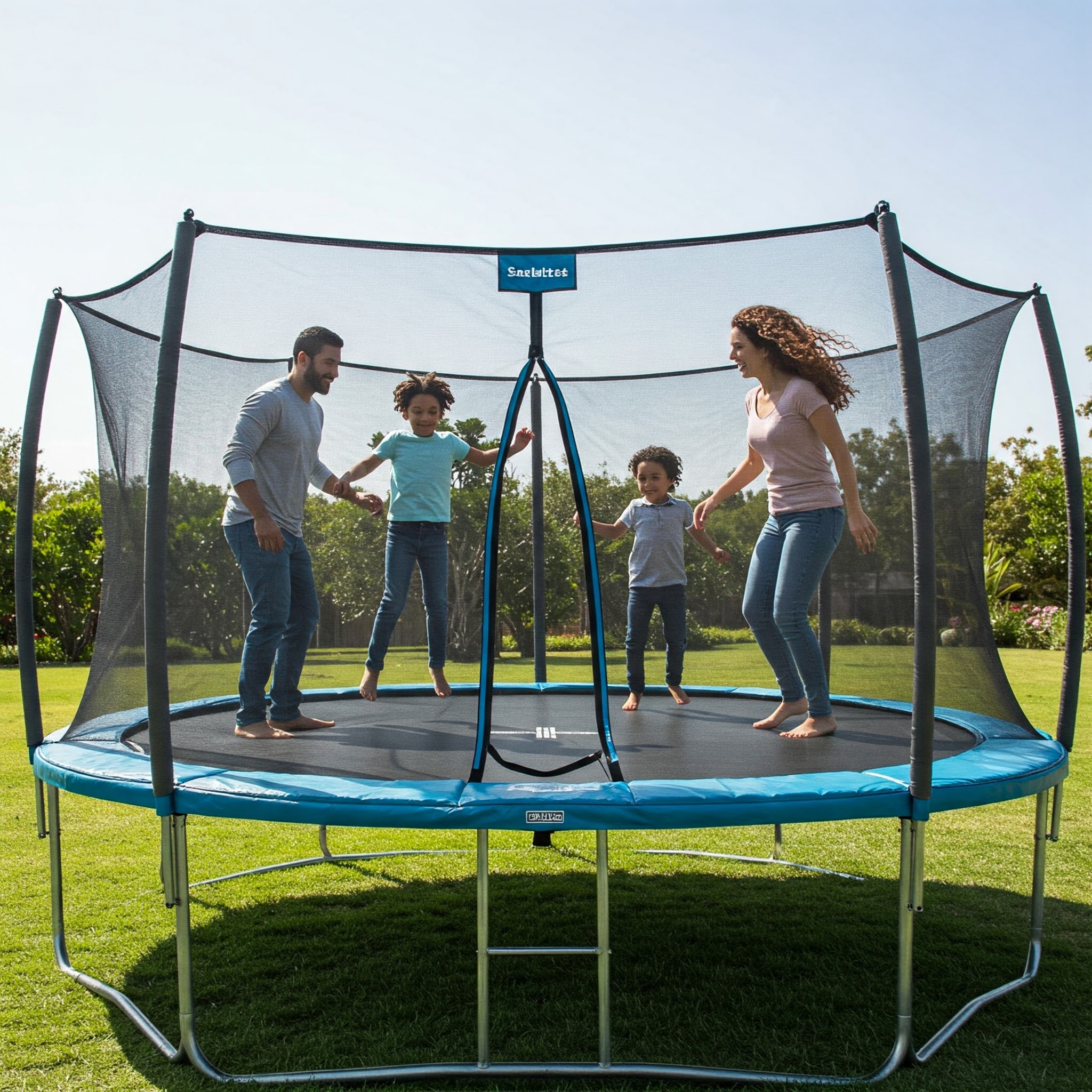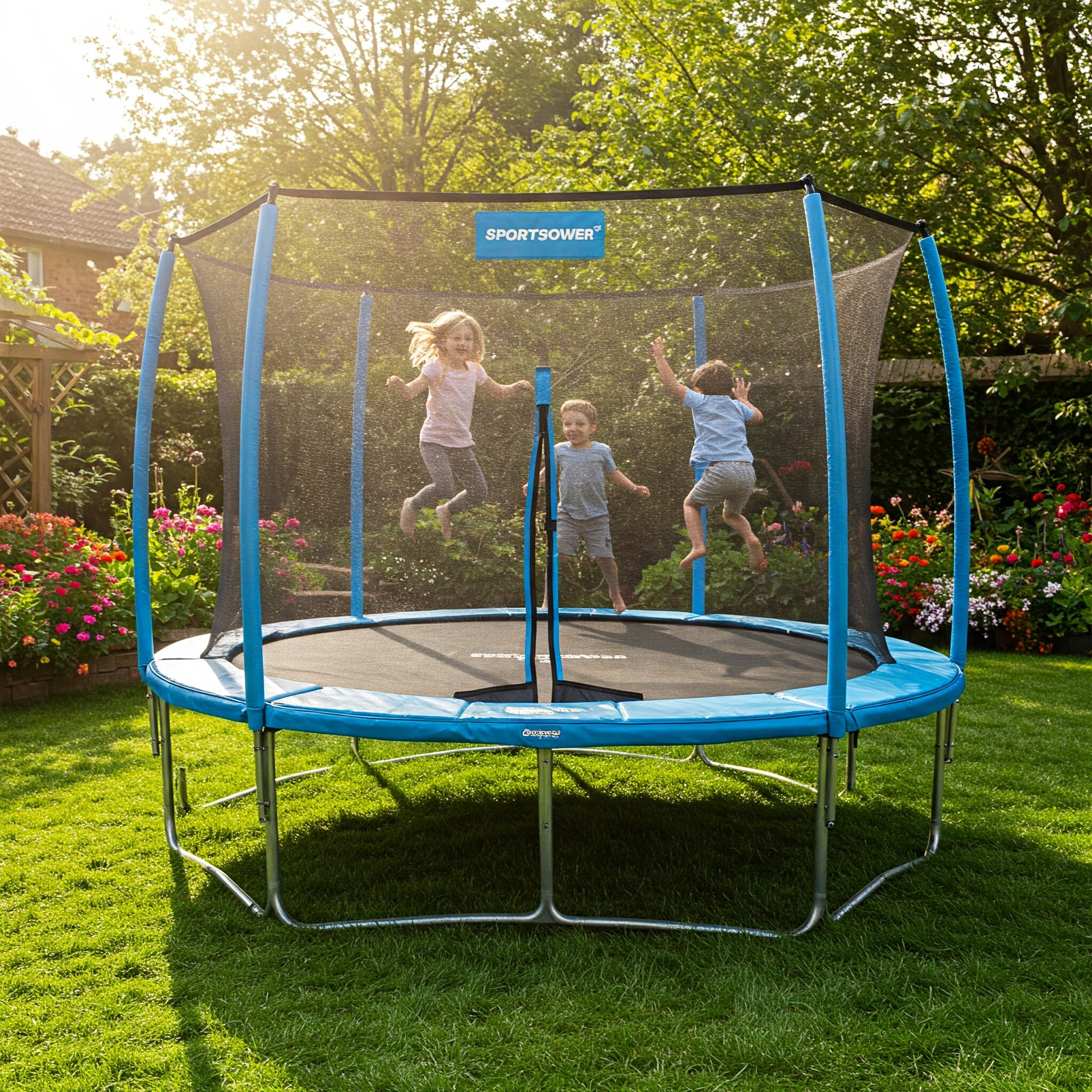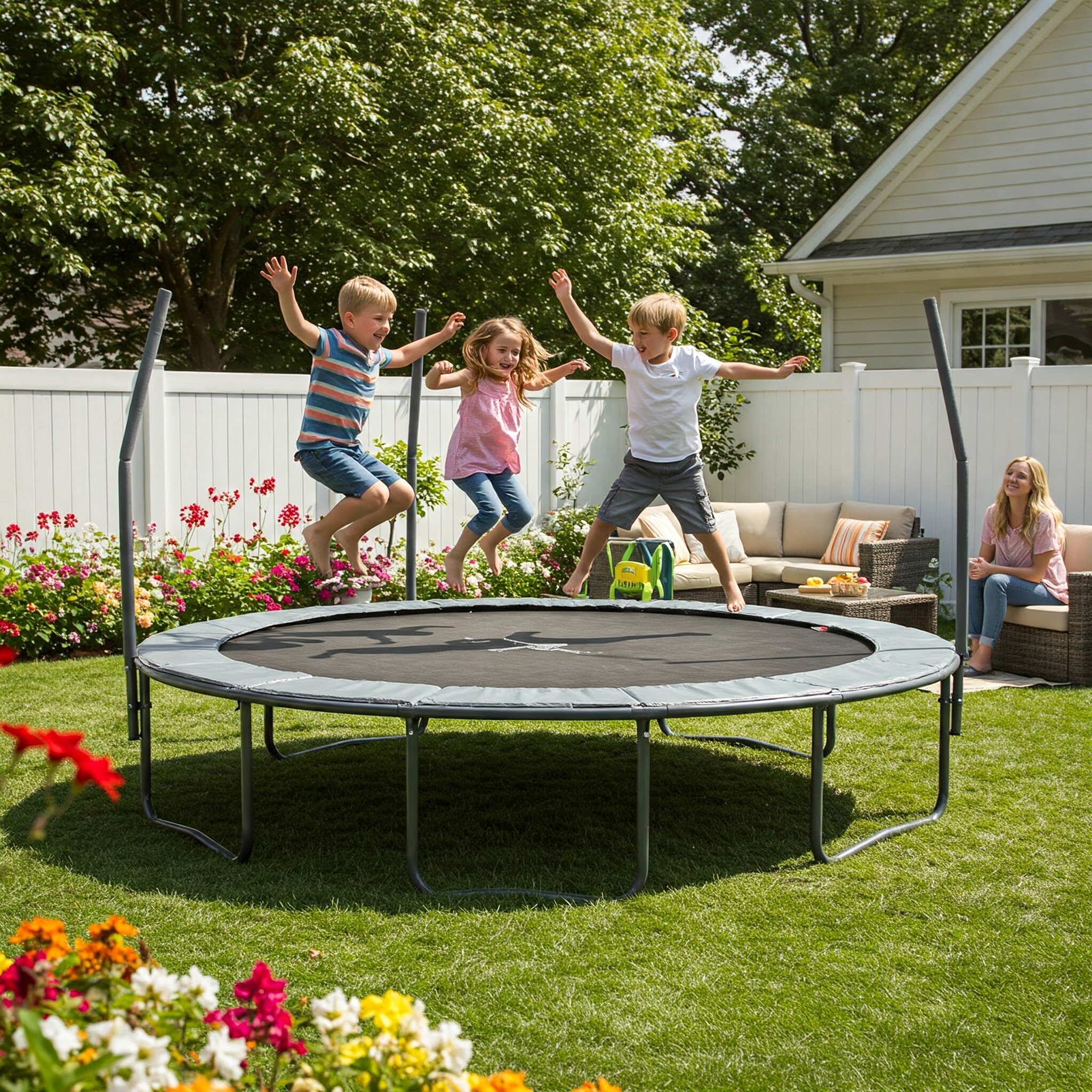The Rise of Springs Trampoline Systems in American Backyards
When it comes to combining fitness with family entertainment, few recreational investments can match the versatility and excitement of a springs trampoline. As backyards across America transform into personal fitness and recreation centers, trampolines with traditional spring systems continue to dominate the market despite newer innovations. These bouncy havens offer unparalleled exercise benefits while creating spaces for lasting family memories.
✨Was this helpful? Spread the word!
A springs trampoline represents the classic design most Americans recognize—a jumping mat connected to a frame using numerous coiled metal springs that provide the signature bounce and elasticity trampoliners love. Despite the emergence of springless alternatives, traditional spring systems remain incredibly popular due to their superior bounce height, responsiveness, and that nostalgic feeling many adults remember from childhood.
In this comprehensive guide, we’ll explore everything you need to know about springs trampolines—from their fundamental construction and safety considerations to the remarkable health benefits they provide for users of all ages. Additionally, we’ll examine the top springs trampoline models available today, helping you make an informed decision for your family’s outdoor recreation needs.
Understanding Springs Trampoline Technology: How It Works
Before diving into specific models and recommendations, it’s essential to understand what makes a springs trampoline function and why the spring system matters significantly to your bouncing experience.
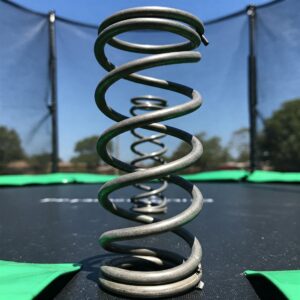
The Anatomy of a Springs Trampoline
A traditional springs trampoline consists of several key components working together:
✅ Frame: Typically constructed from galvanized steel, the frame forms the structural foundation of the trampoline. Quality frames feature thick-gauge steel with weather-resistant coatings to prevent rust and corrosion.
✅ Springs: The heart of the system, these coiled metal springs connect the jumping mat to the frame. Springs vary in number (typically between 64-120 depending on trampoline size), length (usually 5.5″ to 8.5″), and gauge (thickness). More springs generally means better weight distribution and bounce quality.
✅ Jumping Mat: Made from woven polypropylene material, the mat must withstand thousands of jumps while resisting UV damage. Premium mats feature multiple stitching lines for enhanced durability.
✅ Safety Pad: This foam padding covers the springs and frame edge, providing crucial protection from impact with these hard surfaces. Quality pads are weather-resistant, UV-protected, and securely attached.
✅ Enclosure Net: Though not part of the original design, modern springs trampolines typically include safety enclosures that prevent jumpers from falling off the trampoline.
According to a study published in the Journal of Pediatric Orthopaedics, enclosure nets have significantly reduced trampoline-related injuries since becoming standard features.
The Physics Behind the Bounce
The magic of a springs trampoline lies in its energy transfer capabilities. When a jumper lands on the mat, their kinetic energy stretches the springs. These coiled metal components temporarily store this energy as potential energy before releasing it back to the jumper, creating the satisfying upward propulsion we all love.
This energy exchange creates what physicists call an “elastic collision,” where both momentum and kinetic energy are conserved. Springs trampolines typically provide approximately 3-4 feet of bounce height for average-sized adults, though professional-grade models can launch experienced jumpers significantly higher.
The American Academy of Pediatrics notes that while trampoline jumping provides excellent exercise benefits, proper supervision and safety guidelines should always be followed to prevent injuries.
Springs Trampoline vs. Springless Designs: Key Differences
In recent years, springless trampolines using fiberglass rods or elastic bands have gained popularity. Understanding the differences helps clarify why many consumers still prefer traditional springs trampolines.
| Feature | Springs Trampoline | Springless Trampoline |
|---|---|---|
| Bounce Quality | Higher bounce potential, more responsive | Generally lower bounce height, different feel |
| Safety Design | Springs and frame at edge of jumping surface | No exposed springs, different injury risks |
| Maintenance | Springs may require occasional replacement | Fewer moving parts to maintain |
| Weather Resistance | Metal springs can rust over time | Often better weather resistance |
| Price | Generally more affordable | Typically more expensive |
| Installation | More complex assembly | Usually easier to assemble |
| Weight Capacity | Often supports higher weight limits | Varies by design |
| Lifespan | 5-8 years with proper maintenance | 7-10 years typically |
Just one click – help others make better buying decisions too!
Why Many Still Choose Springs Trampolines
Despite innovations in springless technology, traditional springs trampolines maintain significant market share for several compelling reasons:
- Superior Bounce Height: For users seeking maximum air time, springs typically provide better vertical lift compared to alternative systems.
- Authentic Trampoline Feel: Many users prefer the responsive, energetic bounce that only traditional springs can deliver.
- Cost Effectiveness: Springs trampolines generally offer more bounce for your buck, with lower initial investment.
- Repair Flexibility: Individual springs can be replaced when damaged, whereas damage to a springless system might require more extensive repairs.
- Size Options: Springs trampolines come in more size variations, from small backyard models to Olympic-grade equipment.
As one trampoline enthusiast told the New York Times Home & Garden section, “There’s something about the classic spring bounce that just feels right—it’s bouncy but controlled, exactly what you expect from a trampoline.”
Health and Fitness Benefits of Springs Trampoline Exercise
The recreational appeal of trampolines is obvious, but their health benefits deserve equal attention. Regular trampoline exercise—often called “rebounding”—offers remarkable fitness advantages backed by scientific research.

Cardiovascular and Aerobic Benefits
✅ Efficient Cardio Workout: According to a NASA study published in the Journal of Applied Physiology, trampoline exercise can be more efficient than jogging, with participants achieving similar cardiovascular benefits in less time and with reduced perceived exertion.
✅ Elevated Heart Rate: Just 10 minutes of moderate bouncing can significantly increase heart rate into the target zone for cardiovascular conditioning.
✅ Improved Circulation: The alternating gravitational forces during bouncing help stimulate blood flow throughout the body.
Strength and Muscular Benefits
Trampoline exercise engages multiple muscle groups simultaneously:
✅ Core Strengthening: Maintaining balance while bouncing activates deep abdominal and back muscles.
✅ Leg Power: Repetitive jumping builds strength in calves, hamstrings, quadriceps, and glutes.
✅ Full-Body Engagement: Arms, shoulders, and even neck muscles work to maintain stability during bouncing.
✅ Low-Impact Strength Building: Unlike running or high-impact sports, trampoline exercise builds muscle strength without excessive joint strain.
Balance, Coordination, and Proprioception
One of the most significant but overlooked benefits involves neurological development:
✅ Enhanced Proprioception: This awareness of body position improves as users constantly adjust to the changing surface.
✅ Better Balance: Regular trampoline use has been shown to improve balance metrics in both children and adults.
✅ Developed Coordination: The multi-plane movements required during bouncing enhance overall body coordination.
According to research published in the International Journal of Sports Science, trampoline training significantly improves proprioception and may help reduce fall risk in older adults when used appropriately.
Weight Management and Metabolic Benefits
For those concerned with weight management, springs trampoline exercise offers distinct advantages:
✅ Calorie Burning: A 30-minute moderate trampoline session can burn 150-210 calories for an average adult.
✅ Metabolic Boost: Some studies suggest the gravitational variation during bouncing may stimulate metabolism more effectively than constant-G exercises.
✅ Enjoyment Factor: People are more likely to maintain exercise routines they find fun, making trampolining excellent for consistency.
Mental and Emotional Benefits
Don’t overlook the psychological benefits of regular trampoline use:
✅ Stress Reduction: The rhythmic bouncing combined with physical exertion helps reduce stress hormones.
✅ Endorphin Release: Like other forms of exercise, trampolining triggers the release of feel-good endorphins.
✅ Cognitive Benefits: The combination of physical activity and coordination challenges has been linked to improved cognitive function.
A study in the Journal of Physical Education and Sport found that regular trampoline exercise correlated with improved mood metrics and reduced anxiety levels in participants.
Best Springs Trampoline Products in 2025
After extensive research and comparison, we’ve identified the top springs trampoline options available on Amazon that deliver exceptional value, safety features, and durability.
Top Overall Pick: Skywalker Trampolines 15-Foot Jump N’ Dunk
For families seeking the perfect balance of quality, safety, and fun features, the Skywalker Trampolines Jump N’ Dunk consistently earns top ratings. This 15-foot model includes:
- 96 heavy-duty 7-inch springs for excellent bounce quality
- Patented no-gap enclosure system that eliminates dangerous spaces
- Basketball hoop attachment for added entertainment value
- UV-resistant materials for extended outdoor durability
- 200-pound weight capacity suitable for most family members
- Reinforced T-sockets that prevent structural twisting
- Meets or exceeds all ASTM safety standards
With over 11,000 positive reviews, customers particularly praise its sturdy construction and the seamless enclosure design that prevents fingers and toes from contacting springs.
Best Premium Option: JumpSport AlleyOOP PowerBounce 14′ Trampoline
For those willing to invest in professional-grade bounce quality and industry-leading safety features, the JumpSport AlleyOOP PowerBounce stands alone. This premium springs trampoline features:
- Revolutionary dual-spring system with 128 total springs for exceptional bounce
- Patented overlapping doorway entry with triple fail-safe backup
- Superior frame construction using 14-gauge galvanized steel
- Cold-weather performance springs that maintain bounce quality in all seasons
- Industry-leading 10-year frame warranty and 5-year mat warranty
- Advanced padded spring protection system
- Adjustable bounce tension for different user preferences
Although commanding a higher price point, enthusiasts consistently report that the bounce quality and durability justify the investment. As one reviewer noted, “After trying numerous trampolines over the years, nothing compares to the predictable, controlled bounce of the AlleyOOP.”
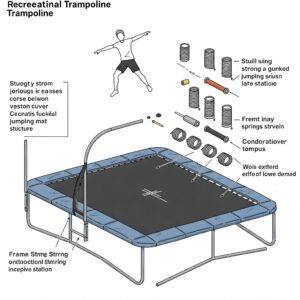
Best Budget-Friendly Option: Merax 14FT Trampoline with Enclosure Net
The Merax 14FT Trampoline proves that safety and durability don’t require breaking the bank. This affordably-priced springs trampoline includes:
- 72 galvanized steel springs providing respectable bounce
- 6 W-shaped legs for enhanced stability
- 330-pound weight capacity exceeding many higher-priced competitors
- UV-resistant jumping mat and safety pad
- Tool-free assembly of the safety enclosure
- Zippered entrance with secure closure system
- Weather-resistant frame with rust-protective coating
Budget-conscious shoppers appreciate that this model doesn’t compromise on essential safety features despite its lower price point.
Best for Small Spaces: BCAN 38″ Foldable Mini Trampoline
Not all springs trampolines need to dominate your backyard. The BCAN 38″ Foldable Mini Trampoline offers the benefits of spring technology in a compact package:
- 32 closed springs providing smooth, quiet bounce
- Adjustable handrail for stability during fitness routines
- Foldable design for easy storage when not in use
- 330-pound weight capacity despite its smaller size
- Anti-slip rubber feet for indoor use safety
- Waterproof jumping mat suitable for outdoor use as well
- Tool-free assembly in under 10 minutes
Perfect for apartments, small yards, or indoor exercise spaces, this mini springs trampoline has garnered praise for delivering effective workouts in limited space. It’s particularly popular among adults using rebounding for fitness rather than recreation.
Best for Serious Athletes: Upper Bounce Easy Assemble 16′ Rectangle Trampoline
Rectangle trampolines provide more consistent bounce across the entire surface, making them ideal for gymnastic training. The Upper Bounce Easy Assemble Rectangle Trampoline offers:
- 108 heavy-duty 8.5″ springs for superior lift and control
- Rectangle shape for predictable bounce patterns favored by gymnasts
- Premium PP mesh jumping mat with 8-row stitching
- Heavy-gauge steel frame with powder coating
- Extra-thick safety pad with shock-absorbing foam
- 500-pound weight capacity for multiple users or heavier individuals
- Tool-free quick assembly enclosure system
Serious trampoliners appreciate the controlled, higher bounce that rectangle springs trampoline designs provide, making this model excellent for those developing tumbling or freestyle skills.
Most Innovative Springs Design: Springfree Trampoline S113 Medium Round
While technically branded as “springfree,” this innovative design actually uses flexible composite rods that function as springs located beneath the jumping surface, offering:
- Hidden spring system eliminating traditional pinch points
- SoftEdge mat with 30 times more shock absorption than padding
- FlexiNet enclosure that guides jumpers back to center
- UV-resistant materials tested in extreme conditions
- 10-year warranty covering all components
- 330-pound weight capacity suitable for most users
- Superior resistance to rust and weather damage
This hybrid approach addresses many traditional spring concerns while maintaining excellent bounce characteristics. Though significantly more expensive than conventional designs, many users find the innovative safety features worth the investment.
Don’t Miss These Exclusive Trampoline Deals! ♂️
→ Ready to bring incredible fun and fitness to your backyard? Click on any highlighted product to check current pricing and availability on Amazon. These carefully selected trampolines offer the perfect combination of safety, durability and bounce quality for your family!
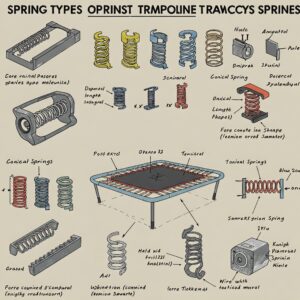
Safety Considerations for Springs Trampoline Users
While trampolines provide wonderful recreation and exercise, safety must remain the priority. According to the American Academy of Orthopedic Surgeons, trampolines account for approximately 100,000 injuries annually in the United States.
Essential Safety Guidelines
To minimize risk while maximizing enjoyment, follow these critical safety practices:
✅ One Jumper at a Time: Multiple simultaneous jumpers significantly increase collision risk. The Consumer Product Safety Commission reports that 75% of trampoline injuries occur when multiple people jump simultaneously.
✅ Adult Supervision: Children should never use trampolines unsupervised, regardless of age or experience level.
✅ No Somersaults Without Training: Head and neck injuries often result from improvised flips and somersaults.
✅ Proper Landing Technique: Learning to bend knees and land in the center of the mat reduces injury risk.
✅ Remove Jewelry and Empty Pockets: Small objects can damage the mat or cause injuries.
✅ Regular Equipment Inspection: Check springs, frame, and enclosure integrity before each use.
❌ Avoid Use During Pregnancy: Pregnant women should consult healthcare providers before using trampolines.
❌ Restrict Use When Wet: Wet surfaces significantly increase slip hazards.
❌ No Climbing on Enclosure: Safety nets are designed to prevent falls, not support climbing.
Critical Safety Features to Look For
When selecting a springs trampoline, prioritize these safety elements:
- Quality Enclosure System: Look for systems where the net attaches directly to the jumping surface, eliminating gaps.
- Adequate Padding: Springs and frame should be completely covered with thick, secured padding.
- Strong Weight Rating: Choose a trampoline rated for at least 50 pounds more than your heaviest user.
- Rust-Resistant Components: Rust compromises structural integrity and safety.
- Secure Anchoring System: In windy areas, proper anchoring prevents dangerous tipping or displacement.
The International Trampoline Industry Association recommends that all trampolines meet ASTM International safety standards, particularly ASTM F381-16 covering trampoline construction.
Installation and Maintenance of Springs Trampolines
Proper setup and ongoing maintenance significantly impact both safety and longevity of your investment.
Installation Best Practices
✅ Level Ground: Always install on flat, level ground free from obstructions.
✅ Proper Clearance: Maintain at least 8 feet of overhead clearance and 6 feet of perimeter clearance.
✅ Follow Instructions Exactly: Most injuries related to equipment failure stem from improper assembly.
✅ Multiple Assemblers: Most full-size trampolines require at least two adults for safe assembly.
✅ Complete in One Session: Partially assembled trampolines present significant safety hazards.
Seasonal and Ongoing Maintenance
To extend the life of your springs trampoline:
✅ Regular Spring Inspection: Check for stretching, rust, or damage; replace compromised springs immediately.
✅ Frame Examination: Look for bent tubes, cracked welds, or corrosion that could indicate structural weakness.
✅ Mat Assessment: Examine for tears, excessive stretching, or UV damage regularly.
✅ Pad Condition: Replace pads that show significant compression, tearing, or detachment from securing straps.
✅ Net Integrity: Check for holes, tears, or sagging that could compromise safety function.
✅ Winter Considerations: In harsh winter climates, consider disassembling or using a weather cover to protect components.
According to a longitudinal study of trampoline durability, properly maintained spring systems typically require partial replacement (20-30% of springs) after 3-4 years of regular use, with complete replacement recommended after 5-7 years.
Trampoline Accessories to Enhance Your Springs Trampoline
The right accessories can improve safety, extend equipment life, and enhance enjoyment of your springs trampoline.
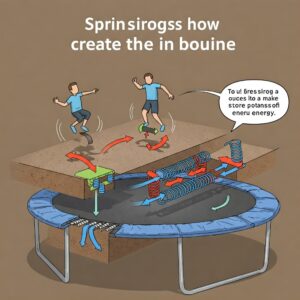
Essential Accessories
- Weather Cover: Protects from UV rays, debris, and moisture during periods of non-use.
- Spring Tool: Makes installation and replacement of springs significantly easier and safer.
- Anchor Kit: Essential for windy locations to prevent dangerous movement or tipping.
- Ladder: Provides safer access, particularly for younger jumpers or smaller adults.
- Shoe Organizer: Keeps footwear organized and prevents tripping hazards around the trampoline.
Entertainment Enhancements
For those looking to maximize fun factor:
- Basketball Hoops: Attach to the enclosure for added play options beyond jumping.
- Sprinkler Systems: Connect to convert your trampoline into a cooling summer activity.
- Glow Kits: Add LED lighting for safe nighttime jumping experiences.
- Bounce Boards: Enable more advanced tricks for experienced jumpers.
- Training Handles: Assist beginners in learning proper bounce technique.
Common Questions About Springs Trampolines
Here are answers to frequently asked questions from potential and current trampoline owners:
How long do springs trampolines typically last?
With proper maintenance and average use, frames typically last 8-10 years, mats 5-7 years, and springs 3-5 years before requiring replacement. Environmental factors like extreme weather can significantly impact longevity.
Can adults safely use recreational trampolines?
Yes, most quality spring trampolines support adult weights, but always check the specific weight rating of your model. Adults should follow the same safety guidelines as children, particularly regarding solo jumping.
How many springs should a quality trampoline have?
This depends on trampoline size, but as a general guideline:
- 8-10 foot trampolines: 54-72 springs
- 12-14 foot trampolines: 72-96 springs
- 15-16 foot trampolines: 96-120 springs
More springs typically provide better bounce quality and weight distribution.
Are longer springs better than shorter ones?
Spring length affects bounce characteristics. Longer springs (7-8.5 inches) typically provide higher, softer bounces, while shorter springs (5.5-7 inches) offer more responsive, controlled bounces. Neither is universally “better”—it depends on user preference.
How much space do I need around my trampoline?
The American Academy of Pediatrics recommends a minimum of 6 feet of clear space around all sides of the trampoline and at least 24 feet of overhead clearance from ground level to accommodate potential bounce height.
Can I leave my trampoline outside year-round?
This depends on your climate. In moderate climates, quality trampolines can remain assembled year-round with proper covers. In areas with heavy snow or extreme weather, disassembly or specialized winter preparation is recommended to prevent damage.
Expert Tips: Getting the Most from Your Springs Trampoline
→ Ready to maximize your trampoline experience? From maintenance shortcuts to bounce technique improvements, our recommended accessories help you get the most enjoyment and longevity from your investment. Check them out now while supplies last!
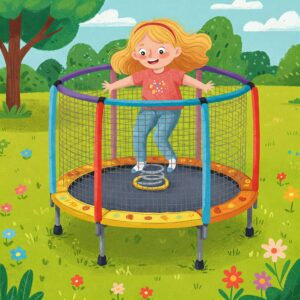
Environmental Considerations and Trampoline Sustainability
As outdoor recreational equipment, trampolines have environmental impacts worth considering:
Materials and Environmental Impact
Most springs trampolines consist of:
- Steel frames and springs (recyclable but energy-intensive to produce)
- Polypropylene mats (petroleum-based, slow to degrade)
- PVC or PE padding (challenging to recycle in many regions)
- Polyethylene netting (moderate environmental persistence)
According to environmental product lifecycle analysis, the average trampoline has a carbon footprint roughly equivalent to manufacturing 3-4 household appliances.
Extending Lifespan for Sustainability
To reduce environmental impact:
✅ Purchase Quality Initially: Higher-grade trampolines last significantly longer, reducing replacement frequency.
✅ Proper Maintenance: Regular care dramatically extends useful life.
✅ Component Replacement: Replace individual parts rather than the entire unit when possible.
✅ Weather Protection: Using covers during harsh weather prevents premature degradation.
✅ Responsible Disposal: When replacement becomes necessary, research recycling options for metal components rather than landfill disposal.
Several manufacturers now offer take-back programs for proper recycling of old trampoline components, particularly the valuable steel frames and springs.
Competitive and Professional Uses of Springs Trampolines
While most readers are considering recreational use, understanding competitive applications provides context for the technology’s capabilities:
Olympic and Competitive Trampolining
Olympic trampolines, while similar in basic design to recreational models, differ significantly:
- Larger jumping surfaces (7m × 4m for Olympic models)
- Higher-tension professional springs
- Rectangular rather than circular frames
- Bounce heights reaching over 30 feet for trained athletes
- More precise tension calibration across the mat
According to the International Gymnastics Federation, competitive trampolining has been an Olympic sport since 2000, with athletes performing complex routines combining twists, flips, and precise landings.
Training Applications
Beyond competition, springs trampolines serve important training functions across many sports:
- Gymnastics: Developing air awareness and rotation skills
- Diving: Practicing body positions and entries
- Freestyle Skiing/Snowboarding: Safely learning aerial maneuvers
- Cheerleading: Mastering tumbling elements and basket tosses
- Parkour: Building spatial awareness and landing technique
Many professional training facilities use in-ground trampoline systems that maintain the traditional spring technology while eliminating fall hazards from platform height.
Making the Right Springs Trampoline Purchase Decision
With numerous options available, focus on these key factors when selecting your springs trampoline:
Primary Considerations
- Available Space: Measure your intended location carefully, remembering to account for safety clearance on all sides.
- Primary Users: Different age groups and weights may influence ideal spring tension and size.
- Budget Reality: While higher prices typically indicate better materials and longevity, excellent mid-range options exist.
- Climate Factors: Local weather conditions affect material choices and maintenance requirements.
- Safety Priorities: Different models emphasize various safety features; identify those most important to your situation.
Size Selection Guide
| Trampoline Size | Yard Space Needed | Ideal User Group | Typical Price Range |
|---|---|---|---|
| 8-10 feet | 20×20 feet | Young children | $150-$450 |
| 12-14 feet | 25×25 feet | Mixed ages | $300-$800 |
| 15-16 feet | 30×30 feet | Teens and adults | $400-$1,200 |
| Rectangle 9×15 | 22×28 feet | Training/multiple users | $700-$2,000 |
Warranty Considerations
Quality manufacturers stand behind their products. Look for:
- Frame warranty: 10+ years indicates confidence in structural integrity
- Mat warranty: 5+ years suggests quality stitching and materials
- Spring warranty: 3+ years reflects appropriate metal quality and coating
- Labor warranty: Often limited but indicates installation support
Conclusion: Why Springs Trampolines Remain Popular Despite Alternatives
After examining all aspects of springs trampolines—from construction and physics to safety and sustainability—it’s clear why they remain the preferred choice for millions of American families despite newer alternative designs.
The traditional spring system delivers the authentic trampoline experience most users expect: responsive, energetic bouncing with significant height potential. While springless alternatives offer certain advantages, they typically can’t match the classic feel and performance of well-designed spring systems.
For families seeking to combine fitness with recreation, few investments offer the versatility, longevity, and multi-generational appeal of a quality springs trampoline. When properly selected, installed, and maintained, these systems provide thousands of hours of physical activity and joy while developing coordination, strength, and confidence in users of all ages.
As you consider adding a springs trampoline to your outdoor recreation space, focus on matching size and features to your specific needs while prioritizing safety features and quality construction. With the right selection and proper use, your springs trampoline can become the centerpiece of family fitness and fun for many years to come.
Ready to Transform Your Backyard into a Fitness Paradise?
→ The perfect springs trampoline is just one click away! Browse our recommended models and find the ideal combination of safety, performance, and value for your family. Don’t wait—the sooner you start bouncing, the sooner you’ll experience all the amazing benefits!

More FAQ
❓ How do I know when to replace springs on a trampoline?
✅ Replace springs on a trampoline when they appear overstretched, rusted, or make squeaky sounds. Worn springs can reduce bounce and compromise safety…
❓ What size springs do I need for my trampoline?
✅ Measure the old spring from hook to hook when not stretched. Most springs for trampolines range from 5.5 to 7 inches, but always match your model specs…
❓ Are spring trampolines better than springless ones?
✅ Spring trampolines usually offer a higher bounce, while springless models focus on safety. Your choice depends on performance preference vs injury prevention…
❓ Can I mix different spring sizes on a trampoline?
✅ No, using different spring sizes can cause uneven tension, reduce bounce quality, and lead to damage or safety risks. Always use uniform springs…
❓ Where can I buy replacement springs for trampolines?
✅ You can buy trampoline springs from online retailers like Amazon, Walmart, or specialized brands that offer exact-size replacements for your model…
Recommended for You:
- No Spring Trampoline: 7 Incredible Alternatives For Safer Backyard Fun
- 10 Amazing Sportspower Trampoline Options For Ultimate Backyard Fun in 2025
- 10 Incredible Lake Trampoline Adventures That Will Transform Your Summer Fun
Disclaimer: This article contains affiliate links. If you purchase products through these links, we may earn a small commission at no additional cost to you.
✨ Found this helpful? Share it with your friends!
